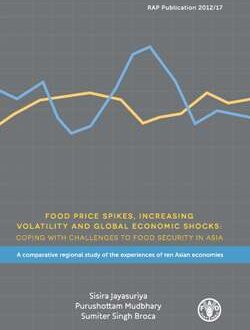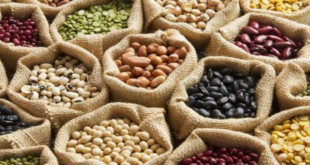Global food prices under multiple stressors, with global warming a long-term risk, economists warn,,,
Increasingly frequent extreme weather events could trigger more spikes in food prices, as supply-side pressures call for mitigation and adaptation, economists told Anadolu.
As the world grapples with a cost of living crisis, especially after the Russia-Ukraine war broke out in February last year, global food prices have become a top concern.

The FAO Food Price Index, which measures monthly change in the international prices of a basket of food commodities, hit a record-high level in March 2022 at 159.7 points, just after the war had begun.
“In March, there was big concern about what the war is going to do to the global markets, as both Ukraine and Russia are important players on the global food markets,” said Monika Tothova, an economist at the UN Food and Agriculture Organization (FAO).
In an interview with Anadolu, she said prices could have been lower if the war would not have happened.
The index fell to 124.3 points in May 2023, down by 22% from its peak. The decline was underpinned by significant falls in price indices for vegetable oils, cereals, and dairy, partly counterbalanced by rises in those for sugar and meat.
Sugar prices have been climbing for some time now, said Tothova, as concerns mount over the potential effects that El Nino could have on sugar harvests.
Uncertainty on the future of the Black Sea grain deal, the impacts of drought from Europe to North Africa, and extreme weather events around the world are putting pressure on food prices.

According to Mauro Pisu, a senior economist at the Organization for Economic Co-operation and Development (OECD), food prices last month were still nearly 10% higher than the last five-year moving average, despite recent moderation.
Each new heat wave to have direct, sudden impact on food prices
With food prices under the sway of both short-term and long-term factors, both Tothova and Pisu agree that global warming and increasing extreme weather events are having a lasting impact.
“Climate change is a long-term trend and if left unaddressed could affect the food production and prices slowly but steadily over time. As the heat waves may become more common with climate change, then the price spikes in the food market will become more common. This is what happened in 2022 in some parts of the world,” Pisu told Anadolu.
Due to global warming, heat waves and extreme weather events are becoming more common. The World Meteorological Organization (WMO) forecasted in a recent report that the annual mean global near-surface temperature for each year in 2023-2027 will be 1.1-1.8 C degrees higher than the average from 1850-1900.

The chance of global temperatures exceeding 1.5 C above pre-industrial levels for at least a year during this period is now 66%, according to the WMO.
“Each new heat wave will have a direct and sudden impact on the food prices. In the long term, the risk of more frequent heat waves may increase price volatility and raise the frequency of food price spikes,” he warned.
Adding to their rising frequency, extreme weather events are also expected to become more dramatic in scale, according to Tothova, adding that this will impact both food production and prices, as well as transportation.

Pisu argued that markets should prepare for more disruption on the supply side due to extreme events. Dealing with supply-side problems requires mitigation policies for the medium- and long-term, as well as adaptation in the short-term, he said.
“The spikes in food prices can be especially damaging in developing countries and will need to be managed and the governments will need to prepare for the risk of more frequent food price spikes.”
Geographies of food products changing
Pointing to another dimension of the effects of climate change on food production, Tothova said the geographic regions where production is taking place are changing.
“As the world gets warmer, you suddenly can produce in the areas where you could not produce before. You have the Siberia, that is melting and suddenly they are saying they produce bananas in parts where a banana has not grown before,” she said, noting that similarly, peppers are now being cultivated in parts of Europe that had previously been inhospitable to them.
Production, she said, could move to new areas.
By Nuran Erkul Kaya,
www.aa.com.tr
 THE GLOBAL WINDOW OF TURKISH FOOD AND AGRICULTURE The Global Window of Turkish Food and Agriculture Sector
THE GLOBAL WINDOW OF TURKISH FOOD AND AGRICULTURE The Global Window of Turkish Food and Agriculture Sector









